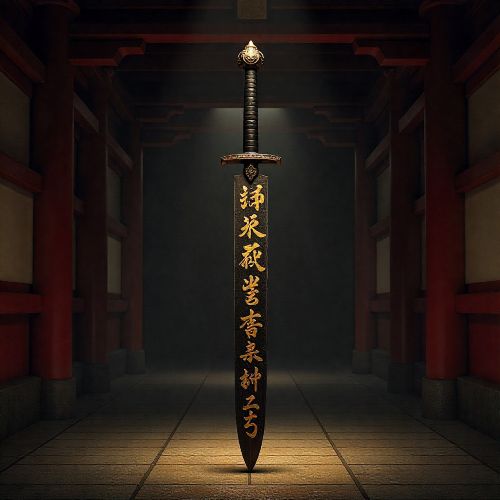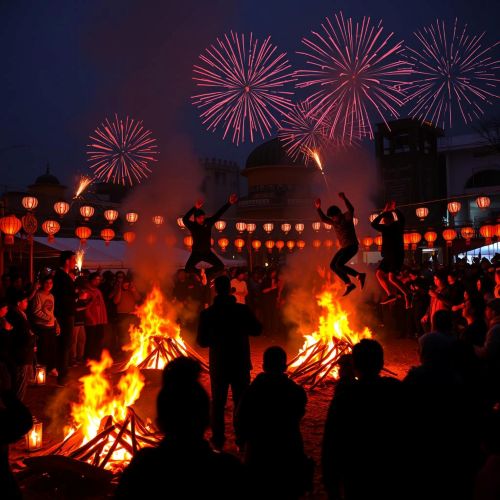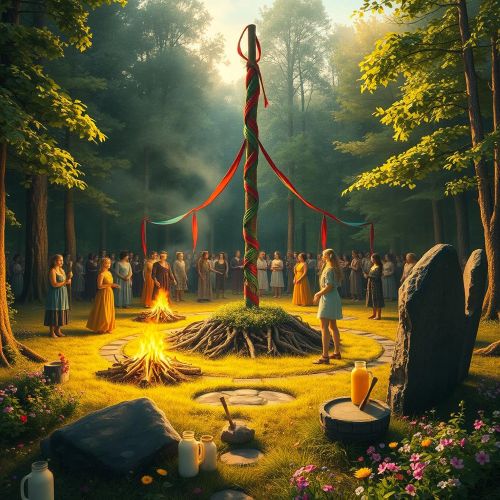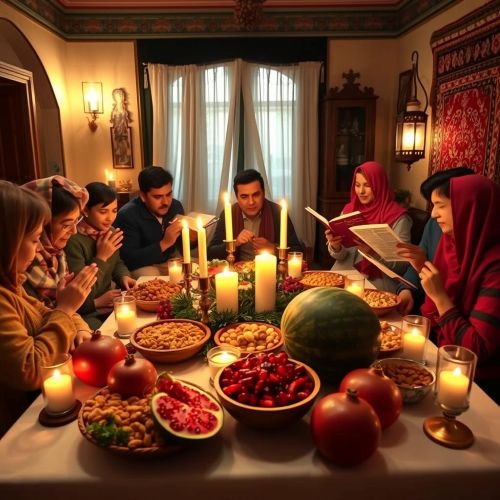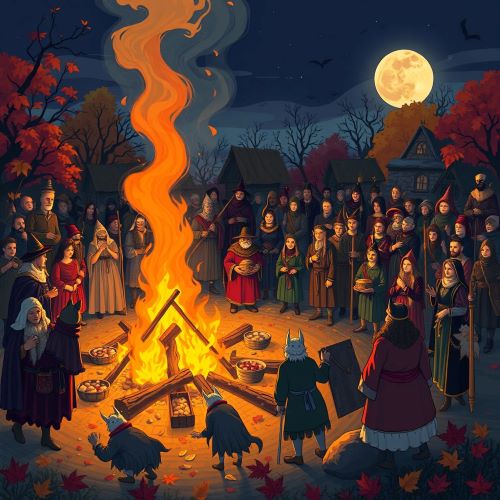Walpurgis Night : Night of Bonfires
At a glance
| Description | |
|---|---|
| Location | Europe |
| Country | Germany, Sweden, Finland, Estonia, and the Czech Republic |
| Dedicated To | Saint Walpurga |
| Duration | 1 day |
| Time of Year | April – May |
Introduction
Walpurgis Night, observed from the evening of April 30 into the dawn of May 1, is a vibrant celebration steeped in both history and myth. While its Christian name honors Saint Walpurga, a revered English missionary canonized in the 9th century, the night’s roots run deeper into the pre-Christian traditions of northern and central Europe. In the Nordic world especially, Walpurgis Night represents the joyful shift from the darkness of winter to the light and fertility of spring. This transition is marked by fire, song, and celebration—blending spiritual symbolism with seasonal transformation. Today, it continues to be one of the most anticipated folk events across the Nordic countries, echoing a profound reverence for nature, community, and ancestral rites.
Connection with Mythology
Walpurgis Night’s enduring symbolism draws heavily from the cosmology and magical beliefs of Norse mythology. In ancient Nordic tradition, certain nights were thought to be liminal—thresholds between the human world and that of spirits, gods, and other supernatural beings. These beliefs are evident in tales where elves, trolls, and land spirits roamed freely during twilight festivals or changes in seasons. The connection between fire rituals and the warding off of malevolent entities is consistent with Norse fire festivals, where bonfires were used as protection against dangers from the unseen realms.
The practice of seiðr—a magical tradition associated with Norse deities like Freyja and Odin—involved rituals that bear striking resemblance to the modern Walpurgis customs of summoning and banishing forces through ceremonial fire and chant. Similarly, the myth of the Wild Hunt, a ghostly procession led by Odin or other spectral figures, evokes the chaotic and mysterious energy that folklore attributes to Walpurgis Night. Though later framed in Christian terms, the underlying motifs of spectral visitations and magical gatherings clearly parallel ancient Nordic rites of fertility, protection, and seasonal renewal.
Main Activities
Modern celebrations of Walpurgis Night in the Nordic countries are both festive and symbolic. In Sweden, Valborgsmässoafton is an occasion of great merriment, especially among students and university towns. People gather in parks and open fields, often in large groups, to sing traditional spring songs, light massive bonfires, and sometimes enjoy fireworks displays. These gatherings are steeped in tradition but infused with modern festivity—champagne breakfasts, picnics, and student-led parades are all common.
In Finland, the holiday is known as Vappu and is marked by similar exuberance. It has grown into one of the nation’s biggest celebrations, with carnival-style events, public gatherings, and a strong student culture component. The consumption of sima, a homemade mead, and various sweet treats adds a culinary flair to the celebration. In some places, people dress as witches or in whimsical costumes, echoing the folkloric theme of mischief and magic that defines the night.
While much of the religious significance has faded in the modern era, the cultural resonance remains potent. The bonfires, in particular, continue to serve as powerful symbols of transformation, mirroring ancient desires to cleanse the land of winter’s darkness and welcome the regenerative power of spring.
Importance in Cultural History
Walpurgis Night stands at a unique crossroads in cultural history, where mythology, religion, and national identity converge. The earliest versions of the celebration were most likely pre-Christian agricultural rites. These focused on invoking blessings for fertility, abundant harvests, and protection from illness or misfortune as the seasons changed. Fire was central in these rites, believed to purify both land and soul.
As Christianity spread through Europe, the Church adapted many of these seasonal festivals by linking them to saints’ days. The canonization of Saint Walpurga conveniently coincided with the existing spring festivals, allowing for a seamless integration of pagan ritual into Christian observance. Saint Walpurga herself became a symbol of protection against witchcraft and disease—aligning well with the themes of cleansing and warding off evil.
During the medieval and early modern periods, the fear of witchcraft gave Walpurgis Night a more sinister reputation. Folklore warned that witches would gather on mountaintops like the Brocken in Germany for nocturnal revels, summoning spirits and engaging in sorcery. In response, villagers lit fires and made noise to drive these dark forces away. These superstitions, while no longer widely held, left a lasting imprint on the celebration, coloring it with a mix of fear and fascination that survives in cultural memory.
International Appeal
Although Walpurgis Night is deeply rooted in northern European culture, its themes of seasonal renewal and spiritual cleansing resonate across the globe. In Germany, the Harz region’s Brocken Mountain is still the center of dramatic celebrations, complete with costumed parades, theatrical performances, and symbolic rituals. The Czech Republic embraces čarodějnice, or the “witch-burning night,” with bonfires and community gatherings to banish winter and evil spirits.
In Estonia, the celebration known as volbriöö includes public processions and students taking symbolic control of cities for the night—a tradition that mixes humor with historical symbolism. Sweden’s Valborg remains one of the country’s most cherished annual festivals, with a focus on national pride and communal joy.
Comparable fire festivals exist outside Europe as well. Beltane in Celtic cultures also marks the beginning of summer, featuring similar bonfires, dancing, and fertility rituals. In Iran, Nowruz fire-jumping ceremonies welcome the new year with purification by flame. In India, Holika Dahan, celebrated the night before Holi, involves lighting pyres to signify the triumph of good over evil. These parallel practices highlight a shared human instinct to honor the turning of the seasons with fire, festivity, and myth.
Walpurgis Night has also made its way into literature, film, and modern spiritual movements. Goethe immortalized it in Faust, while various neopagan and occult groups observe the night as a time for ritual and reflection. Even popular culture occasionally borrows its aesthetic, framing it as a mystical and transformative experience.
Source
Ellis Davidson, H. R. (1990). Gods and Myths of Northern Europe. Penguin Books.
Lindow, J. (2002). Norse Mythology: A Guide to Gods, Heroes, Rituals, and Beliefs. Oxford University Press.
Simek, R. (2007). Dictionary of Northern Mythology (A. Hall, Trans.). D.S. Brewer.
Sundqvist, O. (2016). An Arena for Higher Powers: Ceremonial Buildings and Religious Strategies for Rulership in Late Iron Age Scandinavia. Brill.
Gunnell, T. (1995). The Origins of Drama in Scandinavia. D.S. Brewer.
The Magic of the Night. (2012). https://www.vanderlet.work/english/magic.htm
Frequently Asked Questions
Lorem ipsum dolor sit amet, consectetur adipiscing?
Lorem ipsum dolor sit amet, consectetur adipiscing elit. Praesent convallis vestibulum justo, ac tincidunt nunc vehicula quis. Nullam id dolor quis orci malesuada feugiat. Curabitur aliquet libero at urna ullamcorper, ac ultricies nulla dapibus.
Lorem ipsum dolor sit amet, consectetur adipiscing?
Lorem ipsum dolor sit amet, consectetur adipiscing elit. Praesent convallis vestibulum justo, ac tincidunt nunc vehicula quis. Nullam id dolor quis orci malesuada feugiat. Curabitur aliquet libero at urna ullamcorper, ac ultricies nulla dapibus.
Lorem ipsum dolor sit amet, consectetur adipiscing?
Lorem ipsum dolor sit amet, consectetur adipiscing elit. Praesent convallis vestibulum justo, ac tincidunt nunc vehicula quis. Nullam id dolor quis orci malesuada feugiat. Curabitur aliquet libero at urna ullamcorper, ac ultricies nulla dapibus.
Lorem ipsum dolor sit amet, consectetur adipiscing?
Lorem ipsum dolor sit amet, consectetur adipiscing elit. Praesent convallis vestibulum justo, ac tincidunt nunc vehicula quis. Nullam id dolor quis orci malesuada feugiat. Curabitur aliquet libero at urna ullamcorper, ac ultricies nulla dapibus.
Lorem ipsum dolor sit amet, consectetur adipiscing?
Lorem ipsum dolor sit amet, consectetur adipiscing elit. Praesent convallis vestibulum justo, ac tincidunt nunc vehicula quis. Nullam id dolor quis orci malesuada feugiat. Curabitur aliquet libero at urna ullamcorper, ac ultricies nulla dapibus.



